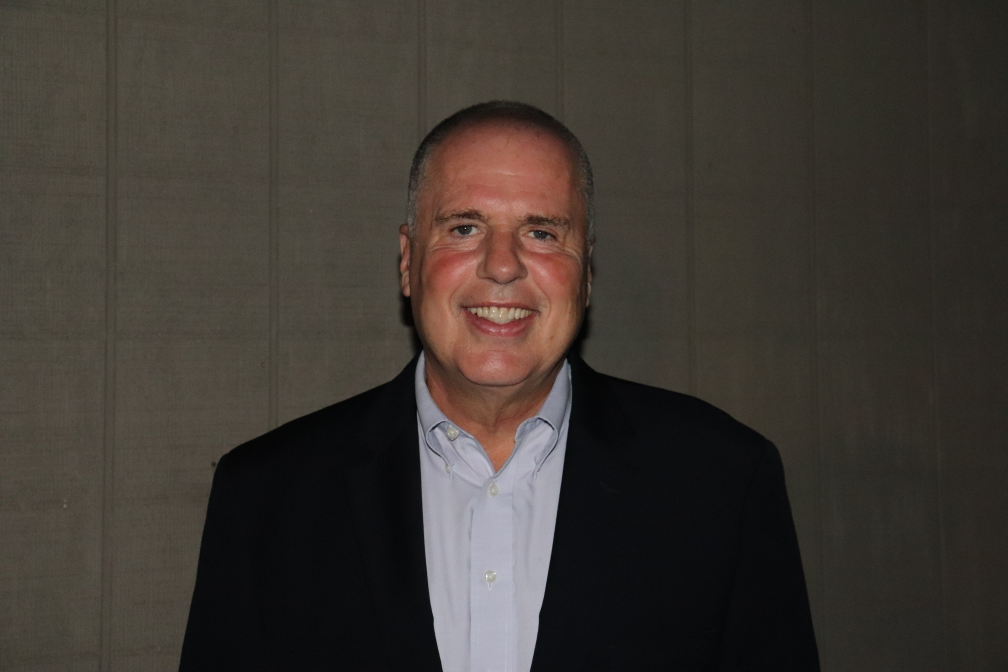Hallmark Movies: Everything You Need to Know About the Middle-America-targeted Brand's Quest to Take Over Video Streaming
After invading cable with an unstoppable Christmas-movie assault, the greeting-card-spawned programmer sets its sights on OTT distribution

Hallmark Channel has developed an unbeatable formula on the way to becoming the No. 1 cable network for women 25-54.
As broken down by The New Yorker recently, the winning recipe for Hallmark movies calls for a nine-act screenplay, starting with a “meet-cute” first act, and themed around a single, attractive—but not too young!—woman with an interesting job, such as novelist or chocolatier.
There is, of course, the attractive male love interest, who can be anything from a fireman to a prince. He will reliably have his first kiss with our protagonist right around Act VII. As The New Yorker notes, the Hallmark Movies audience is decidedly Middle-American and Christian. Recent Hallmark movies stars, however, have included Holly Robinson Peete and Meghan Markle. The appeal is actually pretty broad, Hallmark reps say.
(Notable: Southern Living has ranked its 20 favorite Hallmark movies of all time here.)
Hallmark movies are frequently themed around holidays like Valentines Day. But Hallmark movies win the ratings war on Christmas. In 2019, the channel and its sister network, Hallmark Movies and Mysteries, produced a 103 original movies, and 40 were themed around Christmas.
Since 2011, parent company Crown Media’s Hallmark Channel has programmed “Countdown to Christmas,” a 24-hour-day, seven-day-week slate of its original Christmas-themed Hallmark movies. As The New Yorker noted, 72 million people watched Countdown to Christmas in 2018.
After becoming an unstoppable force on cable television, Crown Media wants to establish a beachhead for Hallmark movies in video streaming, too.
NEXT TV NEWSLETTER
The smarter way to stay on top of the streaming and OTT industry. Sign up below.
A Very Digital Christmas?
Like a lot of media companies vested in cable, Crown Media dipped its toes into video streaming via the pay TV industry’s TV Everywhere initiative, the clumsily executed attempt to let cable, satellite and telco TV customers port their subscriptions to mobile and OTT devices. Hallmark Channel Everywhere launched in 2014.
In 2018, Crown took the plunge into direct-to-consumer SVOD, debuting Hallmark Movies Now. The service, which boasts more than 1 million subscribers, charges $5.99 a month for full access to its programming library (including content from Hallmark Channel, Hallmark Movies & Mysteries and Hallmark Hall of Fame, and original content specifically for digital). There’s currently a one-month free trial period to sample the service. Hallmark movies now supports Roku, Amazon Fire TV, Apple TV and Android OTT devices, as well as iPhone/iPad, and Android mobile and tablets. Hallmark Movies Now is also offered to existing multichannel video-programming distributors and is available on YouTube TV.
Additionally, Hallmark has created the Hallmark Movie Checklist app, a mobile guide that allows users to track Hallmark movie premieres, set tune-in reminders, and check off those that have been watched. The app has generated nearly 2 million downloads since its launch in 2018.
“For a long time, a key component of our digital strategy has involved developing ways we can deepen our viewers’ engagement with our linear channels and enhance their overall experience with our brand and programming,” Vicary said. “These tactics include digital content extensions, games, and contests, and the Hallmark Movie Checklist app. In the near future, you will see us reinventing that experience to capture all our TV assets, including programming from our other two linear channels, Hallmark Movies & Mysteries and Hallmark Drama.
“Obviously, there are a lot of viewers who turn to Hallmark Movies Now because they have cut the cord and don’t have access to Hallmark Channel, Hallmark Movies & Mysteries, and Hallmark Drama,” Vicary added. “But many of the service’s subscribers have also maintained their traditional cable subscriptions, so we purposefully market our SVOD platform as additive to our linear channels, not just as an alternative. We also put a lot of care into curating distinct content experiences across all our services – linear and digital. In this way, each platform features an entirely unique programing lineup.”
Scandal Comes to Hallmark Movies
While Crown aims to keep its Hallmark movies brand decidedly apolitical and non-controversial, 2019 was a challenging year for the company.
First Lori Loughlin, Hallmark movies’ signature star, was unceremoniously axed after her starring role in the real-life “Varsity Blues” college admissions scandal.
Then, in December, Crown caught flack for removing ads on its cable networks for wedding planning site Zola, which featured images of gay nuptials. Crown Media reversed that decision. And in January, Bill Abbott, who had led the company for 11 years as CEO, ankled.
In the multi-act feel-good screenplay that is the Hallmark movies brand, both scandals will be merely a footnote to a history that spans all the way back to 1910,
when Hallmark launched as the manufacturer of greeting cards.
Ultimately, the line was expanded to party goods, gift wrap and stationery, among other products, across its growing line of retail stores. And the brand, which was themed to families, joined the media world, first as the sponsor for 1940s dramatic anthology Radio Reader’s Digest, and then as Hallmark’s Playhouse, which debuted on CBS Radio in 1948.
Early Television Origins
In 1951, the Hallmark brand premiered on NBC as Hallmark Television Playhouse with an airing of the opera Amahl and the Night Visitors. One year later, also on NBC, was a series of live plays packaged in The Hallmark Summer Theater. In 1953, there was a new name, Hallmark Hall of Fame, which was used to promote the Hallmark products to the public through its family friendly storytelling. Through 1978, Hallmark was a staple on NBC as a periodic arena for television movies and specials.
In 1979, Hallmark Hall of Fame moved to CBS, where it remained through 1989 (excluding a brief run on PBS in 1981). ABC became the home for Hallmark Hall of Fame from 1989 to 1994, followed by 16 additional seasons on CBS (1994 to 2011), and a brief return on ABC. By September 2014, The Hallmark Channel became its exclusive home.
The Hallmark Channel
The origins of The Hallmark Channel began as Vision Interfaith Satellite Network (VISN), a cable channel launched in 1988 by the National Interfaith Cable Coalition. That group included 65 different religious groups.
In October 1992, VISN merged with the American Christian Television Service (ACTS), and was renamed VISN/ACTS. In 1994, it became the Faith & Values Channel (also featuring all religious-themed programming). And in 1996, the name was changed again to the Odyssey Channel. By then, the programming became more mass appeal in courtesy of the off-network syndication acquisitions of series like dramas Father Murphy and Our House, and nostalgic comedy Brooklyn Bridge.
In 2000, Crown Media Holdings, Inc. was formed when Hallmark Entertainment, Chase Equity Associates, Liberty Media, and the National Interfaith Cable Coalition transferred their 77.5% total interest in the Odyssey Network into Crown Media Holdings. And, in 2001, the name Odyssey Channel was changed to Hallmark Channel. The emphasis was on family friendly programming in the vein of Touched By an Angel and Hallmark Hall of Fame, among other repeat options, and miniseries The Infinite Worlds of H.G. Wells, which was the first original programming venue following the rebranding.
Marc Berman is editor-in-chief for media-centric The Programming Insider (programminginsider.com), which pioneered the email newsletter format at its inception in 1999. Marc has written for a wide range of publications including Broadcasting + Cable, Next TV, Forbes, Newspro, Campaign US, The Hollywood Reporter and Variety. Known as “Mr. Television” at Mediaweek (now Adweek), Marc has appeared on camera on Entertainment Tonight, Extra, Inside Edition and CNN and MSNBC, among other series and outlets. He is a member of The Television Critics Association and The Broadcast Journalists Television Association. And Marc put his TV historian hat on as author of desk calendar Today in TV History.

